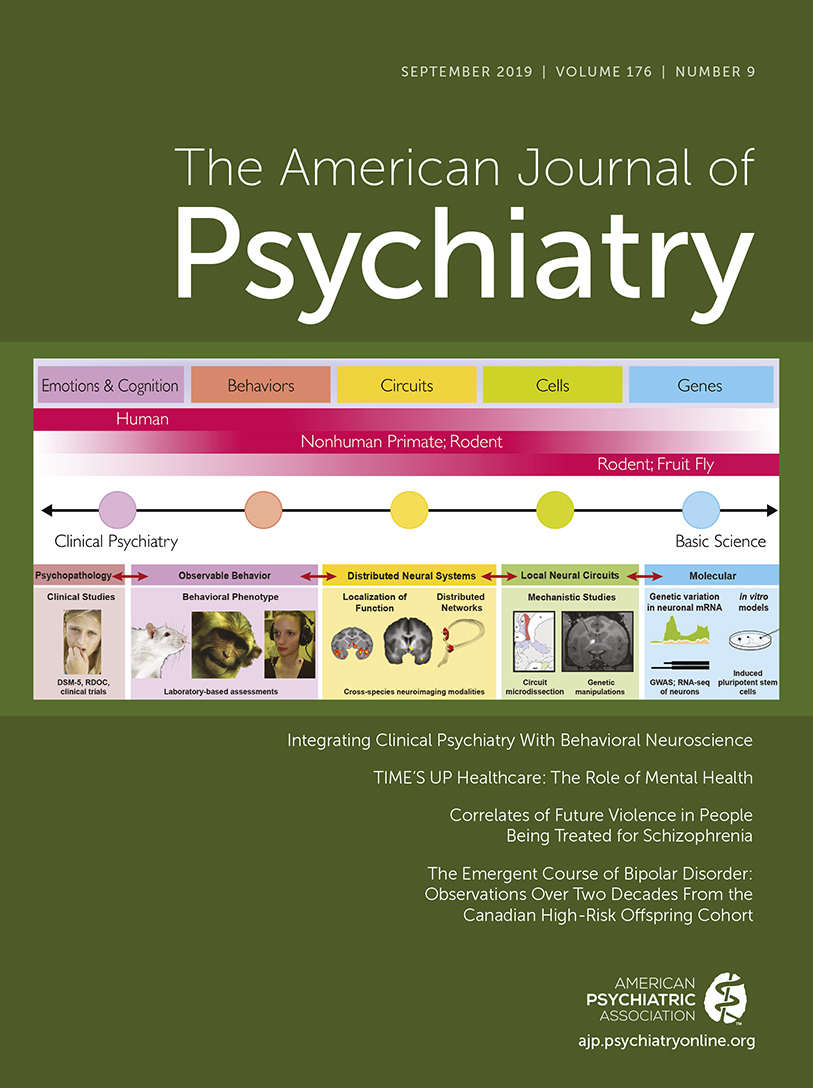High Prevalence of Peripartum Depression Among Physician Mothers: A Cross-Sectional Study
To the Editor: Although accurate estimates are difficult to obtain, peripartum depression is experienced by approximately 10%−15% of women in the general population (1), and it has severe consequences for mother and child. Female physicians are reluctant to divulge or seek mental health care (2); however, peripartum depression among female physicians has not been well described. We examined the prevalence of peripartum depression, treatments accessed, and stigmatizing views among female physicians.
Survey participants were recruited from the Physician Moms Group, an online Facebook community of female physicians who are mothers, through posts on the group’s home page containing a link to an anonymous survey. The survey included self-report questions about history of peri- or postpartum depression, treatments received, and whether participants held any personal stigmas regarding mental health problems among physicians (3). In-depth methodology has been described previously (4).
The proportion of participants reporting peripartum depression (combined peri- and postpartum depression) was examined across racial-ethnic and professional characteristics. Logistic regression models estimated odds ratios and corresponding 95% confidence intervals (CI) for prevalence of peripartum depression, receipt of treatment, and endorsement of stigma. Covariates were selected a priori based on associations in the literature.
Of the 5,698 physician mothers who completed the survey, 74% were white, 13% were Asian, 8% were Hispanic, and 5% were black. We found a high overall prevalence of peripartum depression (25%). Among those with peripartum depression, there was low treatment seeking: 34% reported pharmacotherapy, 25% received psychotherapy, and 40% received either treatment. Nineteen percent used only self-care activities (e.g., exercise).
Racial differences in treatment seeking were noted. In adjusted analysis, black physicians had lower odds of reported peripartum depression compared with white physicians (odds ratio=0.66, 95% CI=0.44–0.97). Asian physicians had lower odds of receiving any formal treatment (odds ratio=0.48, 95% CI=0.32–0.73).
The majority of physicians (74%) endorsed at least one stigmatizing belief about physicians with mental health conditions, and endorsing this view was independently associated with decreased odds of receiving peripartum depression treatment (odds ratio=0.48, 95% CI=0.37–0.65) (Table 1).
| History of Peri- or Postpartum Depression (N=1,428) | Psychotropic Therapyb | Psychotherapyb | Any Formal Treatmentb,c | |||||
|---|---|---|---|---|---|---|---|---|
| Characteristic | Odds Ratio | 95% CI | Odds Ratio | 95% CI | Odds Ratio | 95% CI | Odds Ratio | 95% CI |
| Raced | ||||||||
| White (reference) | — | — | — | — | ||||
| Black | 0.66 | 0.44–0.97 | 0.67 | 0.30–1.50 | 0.98 | 0.43–2.22 | 0.78 | 0.37–1.66 |
| Asian | 0.85 | 0.69–1.04 | 0.42 | 0.27–0.66 | 0.62 | 0.39–0.98 | 0.48 | 0.32–0.73 |
| Othere | 1.21 | 0.92–1.60 | 0.55 | 0.32–0.95 | 0.76 | 0.43–1.35 | 0.58 | 0.35–0.96 |
| Ethnicityd | ||||||||
| Not Hispanic or Latino (reference) | — | — | — | — | ||||
| Hispanic or Latino | 1.02 | 0.79–1.32 | 0.98 | 0.61–1.57 | 1.04 | 0.63–1.72 | 1.00 | 0.63–1.58 |
| Endorses any stigmatized viewsf | (Not examined for prevalence) | 0.48 | 0.36–0.64 | 0.71 | 0.52–0.97 | 0.48 | 0.37–0.65 | |
TABLE 1. Adjusted odds of prevalence of and treatment for peri- or postpartum depression among physician mothers, by race and ethnicitya
Our study demonstrates that peripartum depression is common among physician mothers. Less than half of the women in our study received formal treatment, with Asian subpopulations least likely to receive treatment. Most of these women reported stigmatizing attitudes regarding mental health conditions, and stigma was associated with decreased treatment utilization. Although our study is limited by reliance on self-reported depression instead of a validated instrument, only a third of women with instrument-validated depression will self-report depression (5). This study underscores the need for further research into the prevalence of peripartum depression, and barriers to treatment, among physician mothers.
1 : Perinatal depression: a systematic review of prevalence and incidence. Obstet Gynecol 2005; 106:1071–1083Crossref, Medline, Google Scholar
2 : “I would never want to have a mental health diagnosis on my record”: a survey of female physicians on mental health diagnosis, treatment, and reporting. Gen Hosp Psychiatry 2016; 43:51–57Crossref, Medline, Google Scholar
3 : Predictors of depression stigma in medical students: potential targets for prevention and education. Am J Prev Med 2015; 49:703–714Crossref, Medline, Google Scholar
4 : Perceived discrimination experienced by physician mothers and desired workplace changes: a cross-sectional survey. JAMA Intern Med 2017; 177:1033–1036Crossref, Medline, Google Scholar
5 : Identifying postnatal depression: comparison of a self-reported depression item with Edinburgh Postnatal Depression Scale scores at three months postpartum. J Affect Disord 2019; 251:8–14Crossref, Medline, Google Scholar



